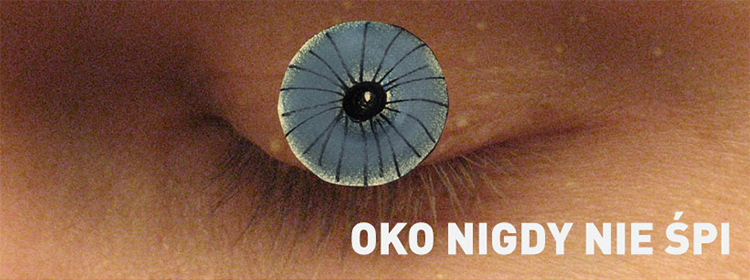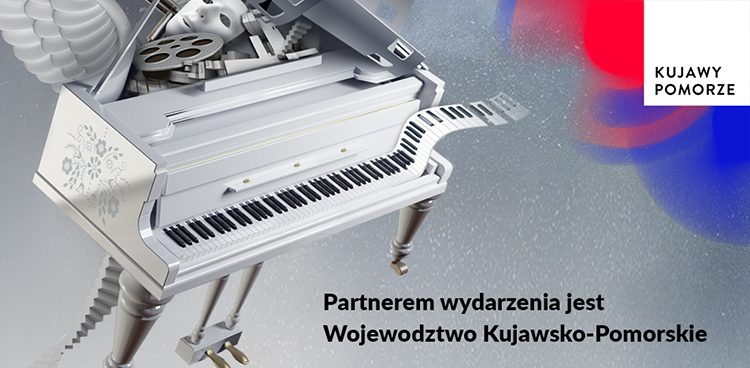Non-Intentional Meetingd
The Eye Never Sleeps – Kuyavian-Pomeranian
THE FEAST
09–12.07.2020
Ostromecko Palace/ Municipal Gallery BWA Bydgoszcz/ Municipal Cultural Centre in Bydgoszcz

The Eye Never Sleeps 2020
7th edition
THE FEAST
Zbigniew Mikołejko
Ideological basis of the program
In Western culture, a feast is not only “great food” with its various, more or less provocative or ludic excesses. And even where it seems so, where simple revelry, gluttony and tacky splendour seem to dominate – as in the Roman Feast of Trimalchion, some paintings by Peter Bruegel the Elder (Wine on St Martin’s Day, Land of Happiness), in the metaphorical scenes of the “battle between Lent and Carnival” or the famous film by Marc Ferreri from 1973 – it often turns out to be an expression of satire, a critical act: It often turns out to be an expression of satire, a critical act, an emblem or symbol of social and civilizational collapse, moral poverty of both communities and individuals. And sometimes the announcement of the apocalypse.
More importantly, however, two tales of feasting actually mark the path of Western faith and thought. We speak, of course, of Plato’s Feast, which largely begins and stimulates the fate of our thought, and of the Last Supper, which is one of the founding acts of Christianity (but also, after all, a momentous theme of art).
Of course, it does not end with this intertwining and “crossing” of these two traditions. And if we look carefully, all important events, all breakthroughs, all great traditions are connected with each other by symbolic feasts. Thus, the Jewish Seder supper takes place in remembrance of the Passover meal that preceded the Exodus from Egypt, the biblical Balthasar’s Feast was a terrifying announcement of his death and the fall of Babylon, the Christmas Eve supper and Easter breakfast in Christianity celebrate the birth and resurrection of Jesus, the chivalrous tradition of the West finds its legendary source in the feasts and discussions at the Round Table, the bloody St. Bartholomew’s Night, heralding the resurrection of Jesus, and the feast of St. Peter and the Grenadines. The bloody St. Bartholomew’s Night, heralding the religious and political solstice in France, takes place right after the royal wedding feast, one of the most noble literary awards, the Goncourt Prize, is announced after dinner at the Drouant restaurant in Paris… And so on and so forth. And the situation is similar in Polish culture, where the two landmark feast scenes from Pan Tadeusz or the appropriate scenes from Wesele (The Wedding) form important symbolic foundations of Polish memory and national imagination. Such is also the case – not for the first, not for the last time – where the living and the dead, the humans and the spectres, happen to feast together.
However, it is not only about these particular unique acts and stories. Feasts are simply inscribed in the order of human destiny, in the usual life of individuals and communities. And they are held to emphasize its rhythms and its important moments – moments which manifest order and the normal, natural course of events, as well as moments in which one demonstrates one’s strength and power, one’s joy in happiness, but also one’s ability to overcome misfortune. Thus we feast according to the order of the times, according to custom, tradition, and the demands of circumstances: on the occasion of the solstices and equinoxes, the coming of spring, the harvesting of crops, the coming of the darkness of winter, or victory over an enemy or other evil. We celebrate births, weddings, life’s triumphs, farewells, especially the last one – to the deceased. Finally, we feast spontaneously, “without occasion” or on any occasion. A feast is, after all, in its deepest essence, an element of collective existence, a radical negation of human solitude. And this is where its power and sense is expressed.
This year, the Non-International Meetings of the THE EYE NEVER SLEEPS – Kuyavian-Pomeranian Festival invite you to the table, as it were… One can get such an impression since the main theme of the Meetings is FEATURE.
To quote Professor Zbigniew Mikołejka: “A feast is after all, in its deepest essence, an element of collective existence, a radical negation of human solitude. And this is where its power and sense is expressed.” This power and sense during the Festival will be created by Artists, Professors, Critics, and the tastes during the four-day cultural feast will be tasted by Spectators, Participants, Recipients.
FEASTING at the Festival will be: Anda Rottenberg, Robert Kuśmirowski, Zbigniew Mikołejko, Anna Królikiewicz, Elżbieta Jabłońska, Dorota Koczanowicz, Yann Youette, Black Dwarf Community Choir, Izabela Chudzyńska, Izabela Plucińska, Wiola Sowa, Kuba Elwertowski, Grzegorz Pleszyński, Johannes Deimling, Combi Cats, Kamil Milewski, Arkadiusz Wojtasiewicz, Łukasz Owczarzak, Agnieszka Taborska and Kasper T. Toeplitz.
THE EYE NEVER SLEEPS – Kuyavian-Pomeranian will visit the Muncipal Gallerybwa Bydgoszcz and the Municipal Cultural Center in Bydgoszcz, while the majority of festival activities are planned to take place in the Palace and Park Complex in Ostromecko.
The organizers and participants cordially invite you to take part in the event, also online.







